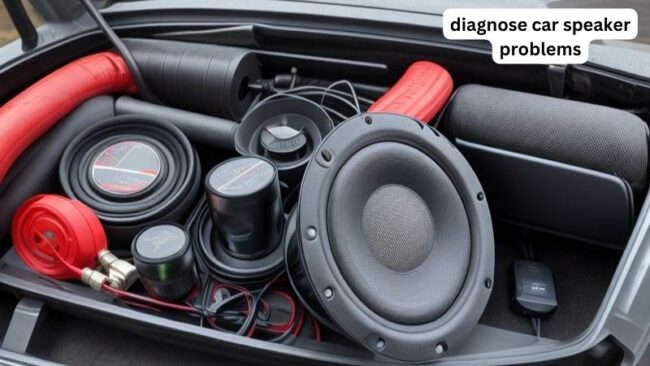how to diagnose car speaker problems?
Today we discuss how to diagnose car speaker problems. The inconvenience of car speaker malfunctions can cause significant disruption to your audio experience while driving. Nevertheless, the process of identifying these problems can be simplified. In this guide, we provide a cohesive and comprehensive step-by-step method for diagnosing prevalent car speaker issues. Through adherence to this method, you will be capable of identifying and potentially rectifying these problems without the need for professional intervention.
Check for Basic Issues:
- Ensure that the volume is turned up to an audible level.
- Confirm that the audio source (radio, CD player, etc.) is working properly.
- Verify that the fader and balance controls are appropriately adjusted.

Identify Speaker-Specific Problems:
No Sound:
Check the wiring connections: Ensure that the speaker wires are securely connected to the head unit or amplifier and that there are no loose connections.
Inspect the speaker cone: Look for signs of damage, such as tears or punctures, which may indicate a blown speaker.
Test the speaker with another audio source: Connect the speaker to a different audio device to determine if the problem lies with the speaker itself or the audio source.
Distorted Sound:
Adjust the equalizer settings: Make sure the equalizer settings are properly adjusted to avoid excessive bass, treble, or mid-range frequencies that could result in distortion.
Check for loose or damaged wires: Inspect the speaker wiring for any loose connections or frayed wires that could cause distorted sound.
Test the speaker at different volume levels: Determine if the distortion persists at various volume levels, as excessive volume can sometimes lead to distortion.
Muffled or Fading Sound:
Clean the speaker grilles: Dust and debris can accumulate on the speaker grilles, obstructing sound output. Clean them gently using a soft cloth or brush.
Inspect the speaker cones: Check for signs of damage, such as water or moisture damage, that may affect the speaker’s performance.
Test the speaker balance: Adjust the balance control to determine if the issue is specific to one speaker or affecting multiple speakers.
Assess Electrical Issues:
Check the fuses: Locate the fuse box and inspect the speaker-related fuses. Replace any blown fuses with new ones of the correct amperage.
Examine the amplifier: If your vehicle has an external amplifier, ensure that it is receiving power and functioning correctly. Look for any visible signs of damage or loose connections.
Seek Professional Assistance:
If you have followed the above steps and are still unable to diagnose or resolve the speaker problems, it may be necessary to consult a professional car audio technician. They have the expertise and equipment to diagnose and repair complex speaker issues.
Final words:
By following these step-by-step guidelines, you can effectively diagnose car speaker problems and potentially address them without professional intervention. Remember to perform basic checks, identify speaker-specific issues, assess electrical components, and seek expert help if needed. With a little troubleshooting effort, you can restore optimal audio quality and enjoy your favorite music while on the road once again.






